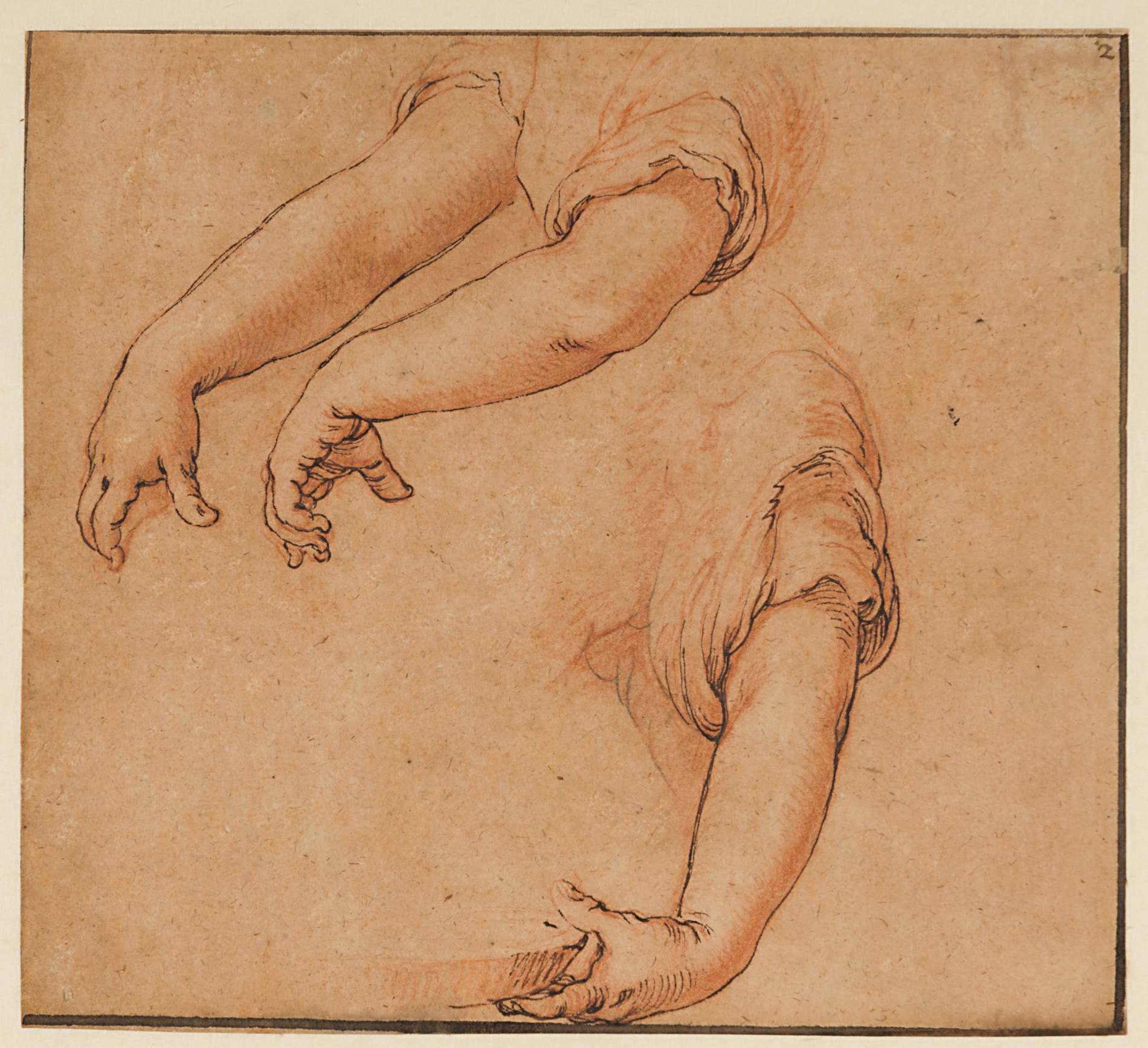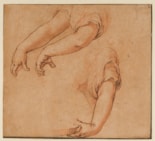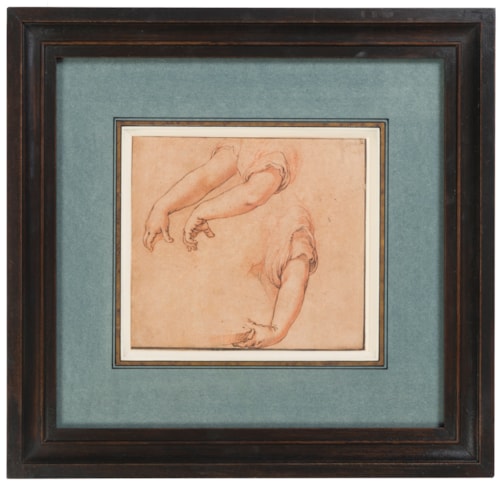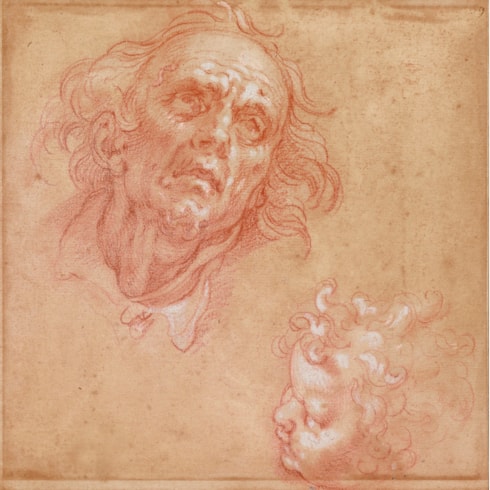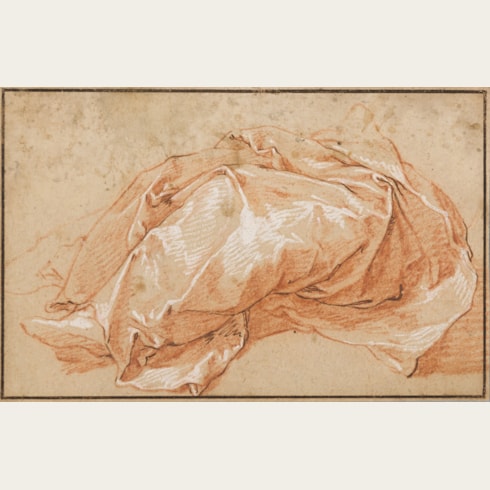Abraham BLOEMAERT
(Gorinchem 1564 - Utrecht 1651)
Studies of Three Arms and Hands
Numbered 2 at the upper right.
Laid down.
143 x 158 mm. (5 5/8 x 6 1/4 in.)
This drawing was once part of a large group of around 140 studies by Bloemaert - mostly figure studies drawn in red chalk - that were at one time in the collection of the French landscape painter André Giroux (1801-1879), and were dispersed at auction in Paris in 1904. Most of these drawings are numbered on the upper right corner of the sheet, up to 162, which suggests that they may have formed part of an album, perhaps one assembled by one of the artist’s sons. Jaap Bolten has suggested that the Giroux drawings were drawn between 1595 and 1630, and were not meant as preparatory studies for paintings but as a sort of model-book or sketchbook of motifs to be copied by Bloemaert’s students. Cecile Tainturier has suggested, however, that the drawings in the Giroux album may be more precisely dated to the decade of the 1620s.
Other drawings by Bloemaert from the ex-Giroux group are today in the collections of the Rijksmuseum in Amsterdam, the Hessisches Landesmuseum in Darmstadt, the J. Paul Getty Museum in Los Angeles, the Metropolitan Museum of Art in New York, the Frits Lugt Collection (Fondation Custodia) in Paris, the Musée des Beaux-Arts in Rouen, and elsewhere.
The present sheet later belonged to the French agricultural commodities broker and collector James F. Bismuth (1931-2020).
Bloemaert was a gifted and prolific draughtsman, praised as such by his biographer Karel van Mander, who noted that the artist ‘has a clever way of drawing with a pen, and, by adding small amounts of watercolour, he produces unusual effects’. He produced numerous studies for paintings and engravings - some six hundred prints after his designs are known - as well as several landscape drawings and many sheets of studies of heads, hands and arms. Some of the latter were reproduced as engravings by his son Frederik and published in the 1650s as the Konstryk Tekenboek, a sort of model-book for students. The Tekenboek proved very popular and was reprinted several times, serving to perpetuate Bloemaert’s influence on later generations of artists. (Indeed, the 18th century French artist François Boucher published a series of etchings after Bloemaert’s figure studies, known as the Livre d’etude d’après les desseins originaux de Blomart, which appeared in Paris in 1735.) The bulk of Bloemaert’s enormous corpus of drawings, numbering around 1,700 sheets, appear to have been retained by his descendants for over fifty years, and it is not until the first half of the 18th century that they began to be sold and dispersed.
Provenance
The posthumous vente Giroux, Paris, Hôtel Drouot, 18-19 April 1904, part of lot 175 (‘Etudes de personnages, de paysages et d’animaux. Cent trente-six dessins, la plupart exécutés à la sanguine, un certain nombre avec d’autres croquis au verso’), the album thence broken up and the drawings dispersed
Galerie Patrick Perrin, Paris, in 1990
James F. Bismuth, Neuilly-sur-Seine
Thence by descent.
Literature

